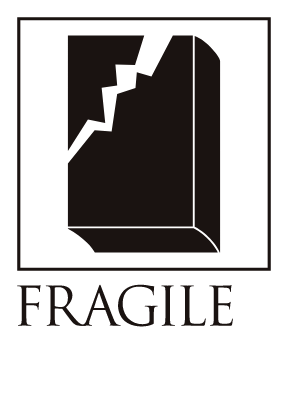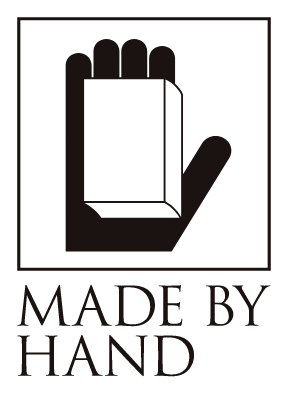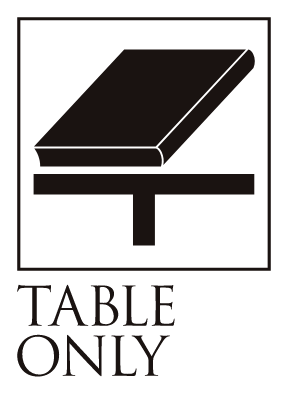GOTHIC ARCHITECTURE
Bibliographic Details
- Title
- GOTHIC ARCHITECTURE(ゴシック建築)
- Author
- William Morris / ウィリアム・モリス
- Publisher
- Kelmscott Press / ケルムスコット・プレス
- Year
- 1893
- Size
- w110 × h147 × d10
- Weight
- 110 g
- Pages
- 68 pages
- Language
- 英語 / English
- Binding
- 背麻布 青厚表紙装
- Printing
- Letterpress printing
- Materials
- Handmade paper
- Condition
- Good
GOTHIC ARCHITECTURE : A LECTURE FOR THE ARTS AND CRAFTS EXHIBITION SOCIETY BY WILLIAM MORRIS (ゴシック建築-美術工芸展協会の講演)
William Morris
Presented by the Kelmscott Press
The ultimate form of simple writing.
The depth of color of black ink.
A typeface with a strong structure.
The feel of the paper and the lightness of a book.
It all seemed perfect.
This book is the simplest and most minimal of all the books published by Kelmscott Press, which has been called the epitome of beautiful books.compositionBest of all, it is the cheapest of the 53 titles and 66 books published by Kelmscott Press.
This book, titled "GOTHIC ARCHITECTURE: A LECTURE FOR THE ARTS AND CRAFTS EXHIBITION SOCIETY BY WILLIAM MORRIS," was published in 1893 as a transcription of a lecture given by William Morris himself. According to the Fukuoka University website, the price at the time of its release was 2 shillings and 6 pence (equivalent to 3,000 yen today). Considering that the 1896 edition of "The Works of Chaucer," considered the highest-end work from the Kelmscott Press, was priced at 120 guineas (equivalent to 3,000,000 yen today), this book, published by the same press, shows how affordable it was from the time of its publication. At current market prices, books from the Kelmscott Press would often fetch over 500,000 to 1 million yen, and due to their artistic value and historical significance, they are often thought of as books that belong in art galleries, museums, or academic institutions. However, thanks to the fact that they have even made books like this available, there are still books that individuals can obtain without too much difficulty.
It was the first time I picked up a book published by Kelmscott Press in the market. The book I got was the 1898 edition of the Kelmscott Press Prospectus. The cover was decorated with a woodblock print by Edward Burne-Jones. Needless to say, Kelmscott Press books by William Morris are a prestigious and legendary item that is known to everyone in the world of second-hand books and book lovers. In the second-hand book industry, they are products that are sold by stores specializing in foreign books and English and American literature. It is natural that a small store that is not specialized and has come late and has no customers would not be able to buy them, so I thought that I would never buy them. However, as soon as I actually picked it up and opened the pages, I felt a desire to try handling them. There is always a reason why something has a long history and continues to be supported. It was Kelmscott Press that taught me this painfully.
As you may know, William Morris was a leading figure in the Arts and Crafts Movement in the late 19th century in England, which valued the handiwork of artisans and advocated "art in everyday life" during a time of rapid industrialization. As part of the movement, Morris & Co., which he founded, launched the wallpapers designed by William Morris, which are still well known today. The spirit of this movement also influenced styles such as Art Nouveau, the founding of craft arts such as the Vienna Werkstätte, and even the founding of educational institutions in different regions such as the Cranbrook Academy and the Bauhaus in Weimar, and Morris would later be called the "father of modern design." In his later years, Morris devoted himself to book production at his own private press, the Kelmscott Press.
The Kelmscott Press was founded in 1891 and continued to operate until 1898, two years after Morris' death. This private press was established with the aim of producing the ideal book, with a view to printing as a comprehensive art. It produced a wide range of books, including medieval decorative arts.ManuscriptThe typeface, paper, and layout of the pages were all carefully designed based on research into books and incunabula (early books).Hand pulling leverManual Printing (Flat printing) and other careful handcrafting techniques were used throughout the production process.
This book, "GOTHIC ARCHITECTURE," was published at Kelmscott Press, and was the 18th of the 53 titles published. It uses Golden Type, one of the three typefaces designed by Morris: Golden Type, Troy Type, and Chaucer Type. Morris placed great importance on the margins of the book, and the margins are wide from the top to the bottom, following the example of medieval books. It is printed twice in black and red, but the decoration is limited to decorative letters at the beginning of each chapter. As I mentioned, the price of "The Works of Chaucer" was 120 guineas (equivalent to 3,000,000 yen), and in this respect, William Morris's Arts and Crafts movement has been subject to harsh criticism due to the fact that "money had to be spent to serve the trivial luxuries of the rich" (Hiroshi Umino, "The Complete History of Modern Design").
This book does not have the frontispiece of Dante Gabriel Rossetti or Edward Burne-Jones, who were Morris's friends and often provided frontispieces for his books. The decoration is minimal, the format is small, the cover is cardboard, and the price has been low since its release. Nevertheless, among the books published by Kelmscott Press, GOTHIC ARCHITECTURE is perhaps the book that best reflects the original ideals of Morris's Arts and Crafts movement. I think about this as I turn the pages of this book, which fits just in the palm of my hand.
There is one more bonus with this book. It is the bookplate attached to the front cover 2. The name engraved is WALTER EDWIN LEDGER. Walter Edwin Ledger was a salon companion of Oscar Wilde and Robert Ross, and is famous in England as a book lover and collector. If you search for the English name, a number of academic websites will appear. Ledger was 31 years old when this book was published. He may have had this book in hand and talked with his salon companions. Ledger's former collection was kept at University College, Oxford, and it is believed that this book either fell out of there or was somehow leaked out before the donation.
What kind of hands has this book, endorsed by a British book lover, passed through before it arrived here? It has been about 130 years since Morris picked it up, and if possible, I would like to listen to the journey this book will take.
Text by Masago Sato
[Reference sites]
Japan Printing Technology Association "The Great Minor Artist: Complete Works of W. Morris"
Fukuoka University "W. Morris's Kelmscott Press"
Nara Prefectural Museum of Art "William Morris from the 19th Century to the Present"
























































